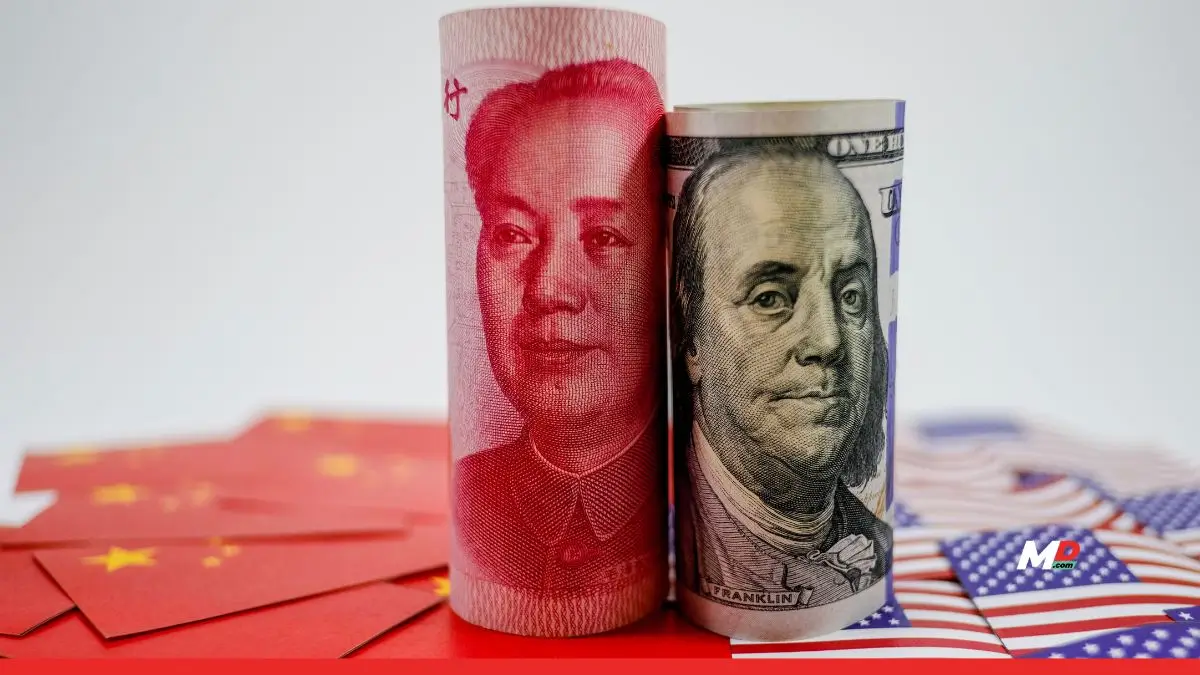Published
8 months agoon

The recent dramatic escalation in tariffs between the United States and China marks a significant deterioration in relations between the world’s two largest economies. With China raising tariffs on US goods to 125% and the US imposing tariffs of 145% on Chinese imports, we are witnessing unprecedented levels of trade barriers. Beijing called Washington’s actions a “joke” and says it no longer considers them worth matching.
The Current Tariff Landscape
The trade relationship between China and the US has reached a critical juncture. In 2024, their bilateral trade totaled approximately $585 billion, with the US importing $440 billion from China while exporting only $145 billion, creating a $295 billion trade deficit. President Trump’s initial tariffs during his first term had already reduced China’s share of US imports from 21% in 2016 to 13% in 2024. The new tariff measures represent a quantum leap in trade restrictions.
Strategic Implications for the United States
Economic Consequences
The immediate economic impact for the US will be significant inflation pressure. With tariffs of 145% on Chinese goods, American consumers will face substantially higher prices for electronics, computers, toys, and batteries. These increased costs will ripple through supply chains, affecting industries dependent on Chinese components and materials.
US companies with manufacturing operations in China, such as Apple (which has already seen a 20% drop in market value), face complex decisions about relocating production or absorbing costs. The impact extends beyond direct trade with China, as Trump’s “reciprocal” tariffs on Southeast Asian countries attempt to close tariff evasion loopholes where Chinese goods are re-routed through countries like Vietnam and Malaysia.
Strategic Advantages
The tariff escalation aligns with broader US strategic goals of reducing dependence on China and rebuilding domestic manufacturing capacity. By making Chinese imports prohibitively expensive, the policy may accelerate “reshoring” of manufacturing. Additionally, the US holds significant leverage through its control of advanced technology exports, particularly semiconductors essential for China’s AI ambitions.
Strategic Implications for China
Economic Challenges
China faces serious economic consequences from this trade war. Already contending with a property market crisis, high youth unemployment, and slowing economic growth, these tariffs threaten to further depress China’s export sector. China’s statement that it will “ignore” further US tariff hikes suggests its exports to America may soon become economically unviable.
China’s declaration that it will “fight to the end” indicates recognition that this is no longer just about trade, but about global economic influence and technological leadership. The country’s massive $1 trillion goods surplus with the rest of the world makes finding alternative export markets crucial.
Strategic Countermeasures
China holds significant retaliatory options. Its control over critical minerals and rare earth processing gives it leverage over global supply chains. Beijing has already restricted exports of germanium and gallium, used in military applications. China could further weaponize its dominance in battery materials and other critical resources.
President Xi’s appeal to the European Union to “jointly resist unilateral bullying” demonstrates China’s strategy to create economic alliances to counter US pressure. China may also accelerate its efforts to develop technological self-sufficiency and reduce dependency on US systems.
Global Economic Repercussions
The US and China together represent 43% of the global economy according to the IMF. Their trade conflict creates widespread uncertainty that dampens business investment globally. Evidence suggests that tariffs do not simply redirect trade flows but reduce them overall, slowing global economic growth.
The risk of Chinese “dumping” excess production on world markets, particularly in sectors like steel where China has significant overcapacity, threatens producers worldwide. This could trigger protective measures from other nations, potentially leading to a fragmentation of global trade.
Financial markets have already demonstrated volatility in response to these developments. Currency markets, bond yields, and equity prices are likely to experience continued instability as investors reassess global growth prospects and supply chain risks.
The Future of Global Trade
This escalation may represent a turning point in globalization. The integrated global trading system built over decades is giving way to regional blocs and strategic competition. We may be witnessing the acceleration of “friendshoring” where supply chains are built among geopolitical allies rather than determined purely by economic efficiency.
The World Trade Organization, already weakened by years of US criticism, faces further irrelevance as bilateral tariff wars supersede multilateral trade governance. Nations may increasingly need to choose between US and Chinese economic spheres of influence.
Looking Ahead
The US-China tariff escalation represents more than just a trade dispute; it signals a fundamental realignment of the global economic order. Both nations appear willing to accept short-term economic pain for perceived long-term strategic advantage. Third countries face difficult choices about how to navigate these tensions.
The ultimate outcome remains uncertain. Historical trade wars have typically produced mutual economic damage rather than clear winners. What is clear is that the global economy is entering a new era of strategic competition where economic policy is increasingly subordinated to geopolitical objectives.
For businesses and governments worldwide, adapting to this new reality will require reassessing supply chains, market access strategies, and economic partnerships in a world where the two largest economies are engaged in unprecedented economic conflict.


India’s Growth Engines Awarded: Most Preferred Workplaces 2025 Set New People-Centric Benchmarks


India’s Growth Engines Awarded: Most Preferred Workplaces 2025 Set New People-Centric Benchmarks


CBI books Anil Ambani’s son, RHFL in ₹228 Crore bank fraud case


Quick-Commerce Heading for Shakeout as Funding Model Fails, Warns Blinkit CEO


Venkatesh Iyer never looked at us during trials and I thought he was someone with a lot of attitude : Abhishek Nayar


Welspun One expands footprint with 46-acre Talegaon MIDC project; unveils ~INR 550 crore plan for a next-generation logistics park

